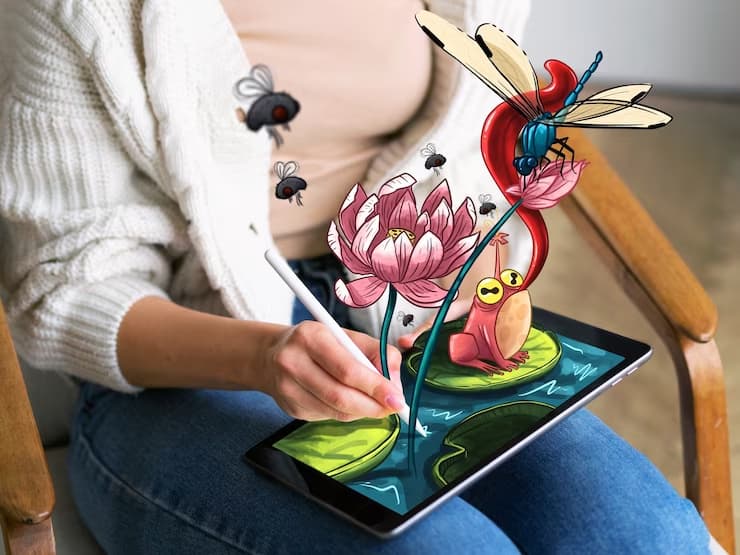Adobe Illustrator serves as a leading digital illustration and drawing tool. For those venturing into the realm of artistic creation or seeking to elevate their skills, Illustrator presents an array of drawing tools and techniques. This detailed guide will thoroughly explore the basics of drawing in Illustrator, uncovering diverse approaches to unleash your creative potential.
Essential Drawing Tools in Adobe Illustrator
Illustrator houses vital drawing instruments crucial for crafting captivating artwork:
- Pencil Tool (shortcut: N);
- Paint Brush Tool (shortcut: B);
- Pen Tool (shortcut: P);
- Blob Brush Tool;
- Curvature Tool.
These tools form the core of artistic expression within Illustrator, and their customization options ensure easy access from the Toolbar.
Drawing Techniques in Adobe Illustrator
The creation of lines in Illustrator involves a plethora of tools and methodologies. Understanding the Line Segment Tool’s functionality aids in producing precise straight lines and geometric shapes.
Crafting Curved Lines in Illustrator
Mastering curves introduces depth and intricacy to illustrations. Utilize the Pen Tool, Curvature Tool, or Ellipse Tool to fashion seamless and intricate curves, essential for expressive artwork.
Creating Wavy Patterns Using the Zig Zag Tool
Leveraging the Zig Zag Tool’s effects allows the transformation of ordinary lines into visually captivating and dynamic waviness, providing artists with a creative edge.
Refining Lines in Illustrator
Refinement plays a pivotal role in artwork. Employ the Smooth Tool to eliminate jagged edges and refine stroke precision for a polished finish.
Explore more how to draw lines in this tutorial
Exploring Manual Image Tracing in Illustrator in 3 Steps
Dive into the process of manually tracing images in Illustrator, opening up boundless creative avenues.
Step 1: Initiating a New Document
Begin by creating a new document in Illustrator, choosing the suitable size and orientation. Import the image for tracing, opting for “File” -> “Place,” and setting it as a template for convenience.
Step 2: Placing the Selected Graphic
Select “File” -> “Place” or use the keyboard shortcut. In the dialogue box, designate the file as a template in Illustrator.
Step 3: Tracing the Image:
- Employ the Curvature Tool to trace the sketch or image meticulously;
- Initiate by clicking along the image’s outline, establishing anchor points, and tracing its contour;
- Utilize the Direct Selection Tool to refine curves and create an accurate vector replica.
Crafting Wavy Lines in Illustrator using the Zig Zag Tool
On occasions requiring the creation of smooth, curved lines in Illustrator – for instance, depicting water or enhancing aesthetics:
- Draw a straight line using fundamental drawing tools;
- Choose the stroke color from the Swatches Panel for visibility;
- Transform the line into a wave via “Effect” -> “Distort & Transform” -> “Zig Zag…”
Photoshop GIFs for events: animated campaigns tutorial.
Smoothing Outlines in Illustrator:
- Occasionally, when using tools like the Pen Tool or Pencil Tool, lines might appear uneven. Rectify this using the Smooth Tool;
- Select the Direct Selection Tool to identify the path requiring smoothing;
- Enhance path quality by using the Smooth Tool along the path.
Conclusion
The realm of digital artistry thrives within Adobe Illustrator. Armed with a grasp of fundamental tools and techniques, artists can navigate, experiment, and fashion compelling artwork in Illustrator.
Whether tracing images, crafting wavy lines, or refining curves, Illustrator empowers creative expression. Embrace Illustrator’s limitless potential and embark on a gratifying journey of artistic innovation and creation.
